A collection of maps about the diverse Spanish vocabulary and its varieties in America, Europe, and Africa. The Spanish language is known as “Español” or “Castellano” (Castillian). Although both terms are interchangeable, in some places one is preferred over the other. Between 480 and 577 million people use Spanish in their daily lives, mostly in parts of America, called Hispanoamerica (Spanish-speaking countries of North, Central, and South America), and also in Europe (Spain). Unknown to many people is the fact that is also still spoken in Africa, in Equatorial Guinea, and of course also in the territories that belong to Spain: Canary Islands, Ceuta, and Melilla. In Asia and Oceania is still possible to hear Spanish in the former colony, the Philippines, and on Easter Island (which belongs to Chile).
Apricot
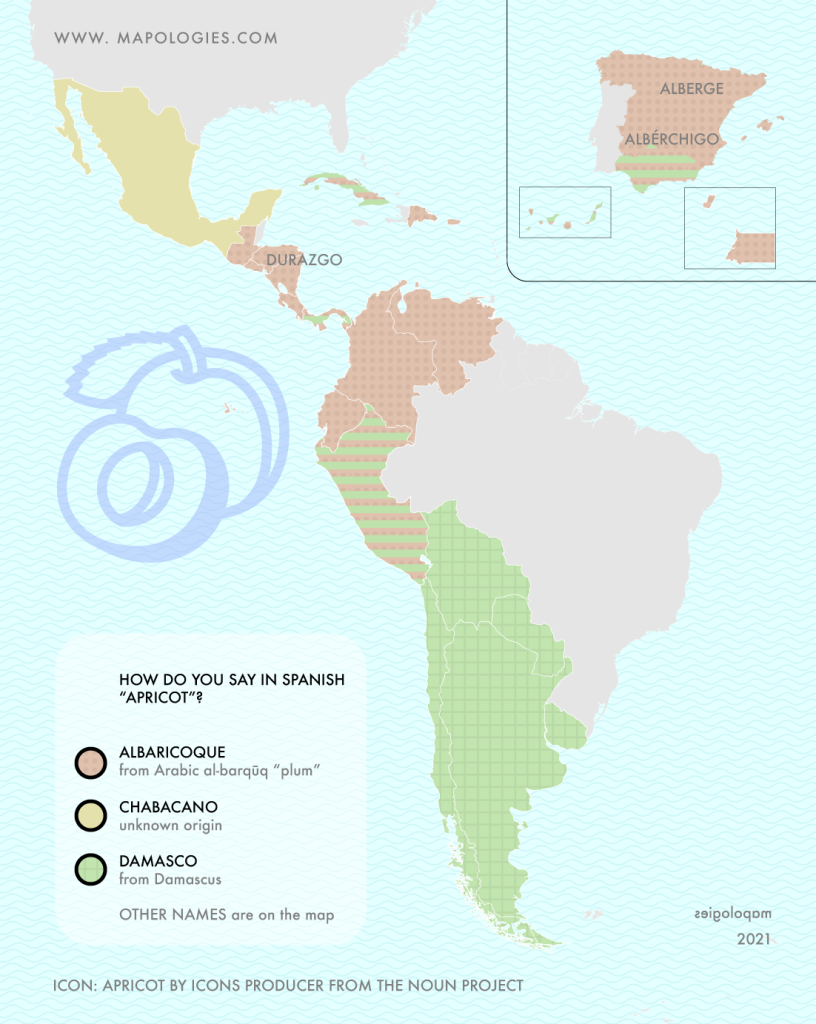
Migrating populations bring with them not only new forms of art, technologies, and ideas but also introduce various animals and seeds to their new environments. The arrival of Muslims in medieval Spain was not merely a propagation of a new religion; it also introduced a new fruit known as “al-barqūq” (الْبَرْقُوق), which translates to plum. Delving deeper into this intriguing topic, it’s noteworthy that Arabs adopted the term from Greek, and Greeks borrowed it from Latin.
Both apricots and plums share intertwined stories and names. The borrowed Arabic term evolved into “apricot” in English and “albaricoque” in Spanish. Different but related.
Interestingly, in Spanish, there is a synonym: “damasco“. In Modern Greek “δαμάσκηνο (damáskino)” even if it is the same word, it means plum. The Spanish & Greek words origins from Ancient Greek δαμασκηνός (damaskēnós), associated with the city of Damascus, in Syria, a historical hub renowned for its high-quality products.
Several centuries later, it was the Castilians who set foot in a different land, bringing these words along with them to the Americas. Over time, regional preferences emerged. In the northern part, “albaricoque” gained popularity, while in the southern regions, “damasco” took root.
Armadillo

Avocado
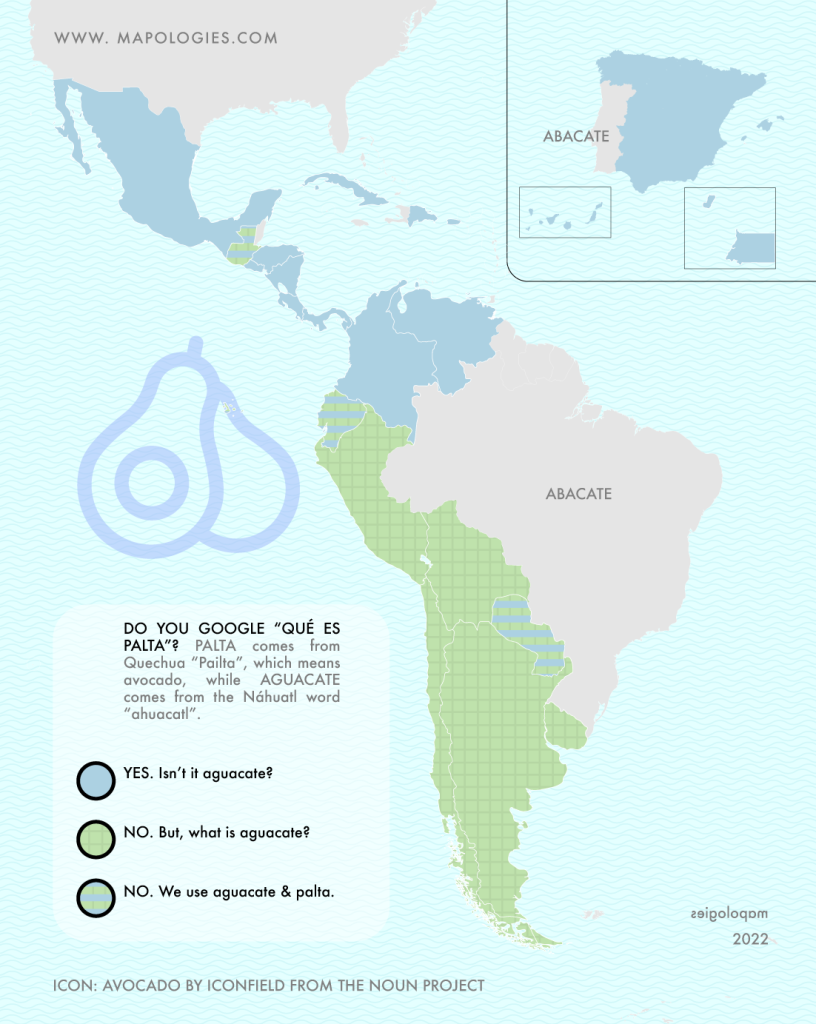
Avocado (Persea americana) is the fruit of a tree originally from America. The history and geographic distribution of these words are fascinating, reflecting the complex interplay of languages and cultures in the Spanish-speaking world. English “avocado” word was borrowed from the Spanish “aguacate“, which comes from Classical Nahuatl āhuacatl. However, not everybody adopted it. In most parts of South America, the word preferred is “palta“, which was borrowed “pallta”, not from Nahuatl, but from the Quechua word.
Baby
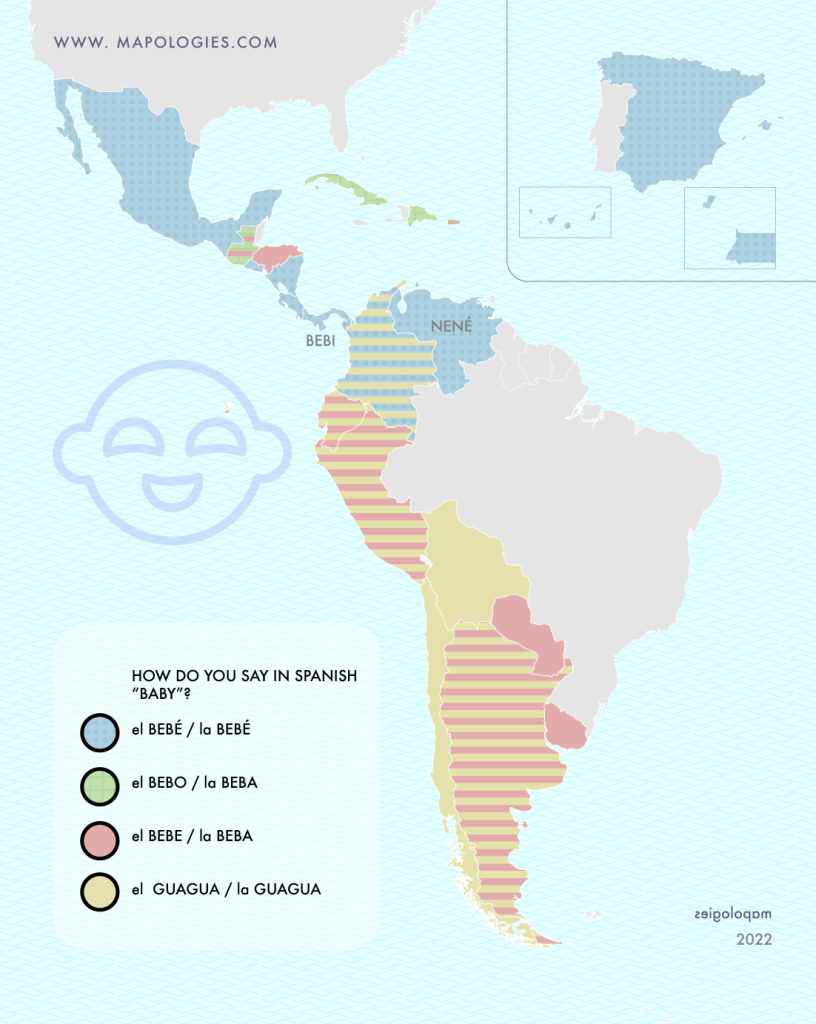
Baby bottle
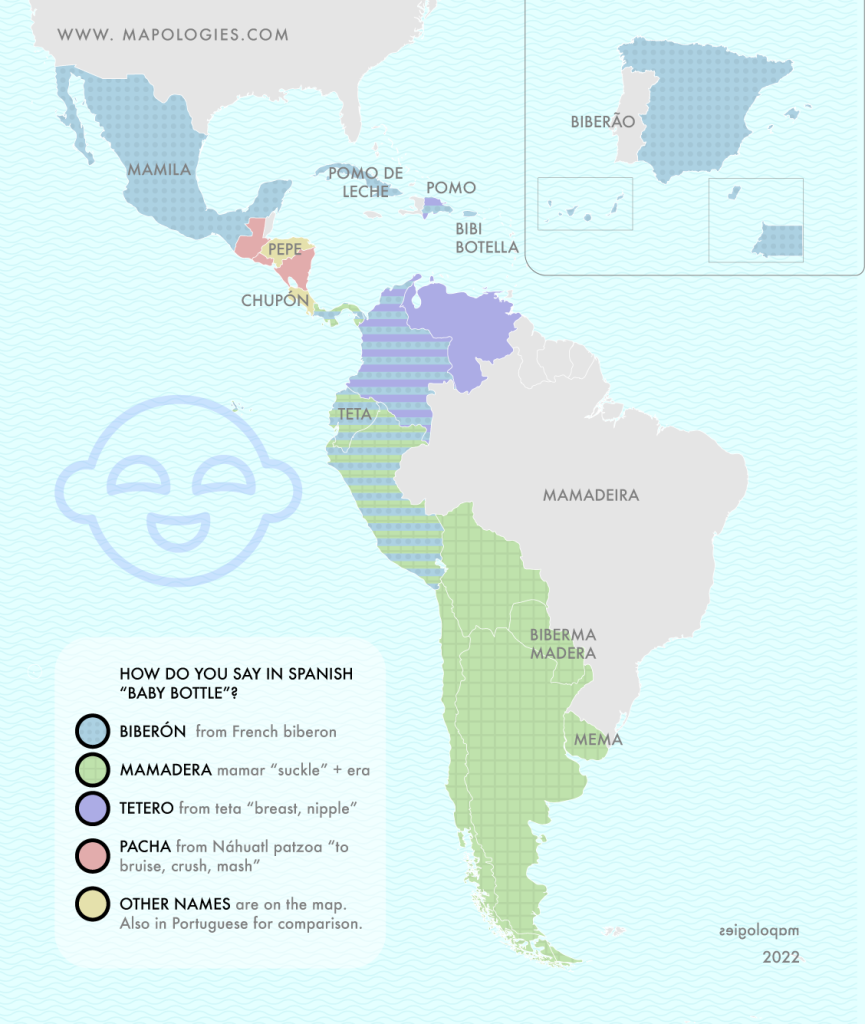
Banana
Bandaid

Bathtub

Bra

The Spanish language offers several terms for bra: brasier, sostén, corpiño, and sujetador. Each of these terms has its own distinct etymology and regional usage within Spanish-speaking communities.
Similar to the English term bra, brasier in Spanish traces its origins back to the French word “brassière,” initially denoting a lining inside armor to protect the arm. Gradually, it transformed into a woman’s undergarment to provide breast support. Brasier is predominantly used in Latin America. Another common term is sostén, derived from the Spanish verb “sostener,” meaning “to support,”. While in Spain it is prevalent sujetador, from the Spanish verb “sujetar,” “to hold”
In the southern regions of South America, the preferred term for a bra is corpiño, a word borrowed from Galician. Corpiño, which literally translates to “little body,” originally before becoming synonymous with bras, encompassed a variety of garments: bodices, sleeveless shirt, blouses, the upper part of a dress, as well as undershirts or corsets.
Bean

Bow tie
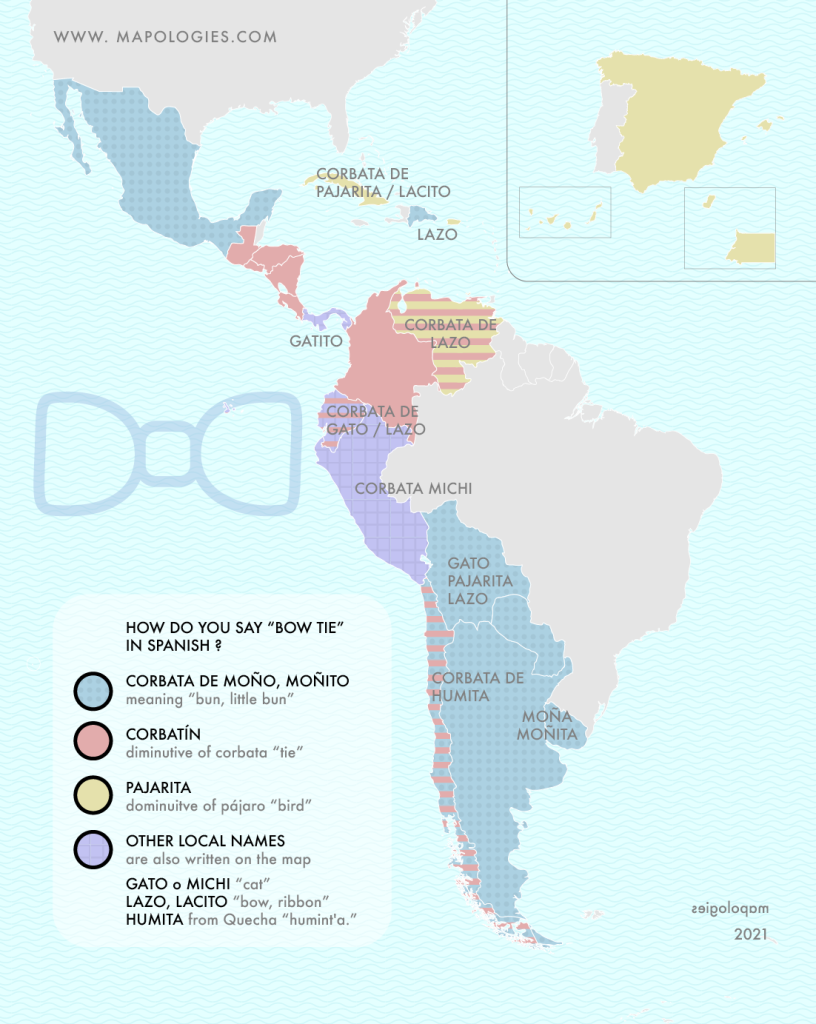
Brown
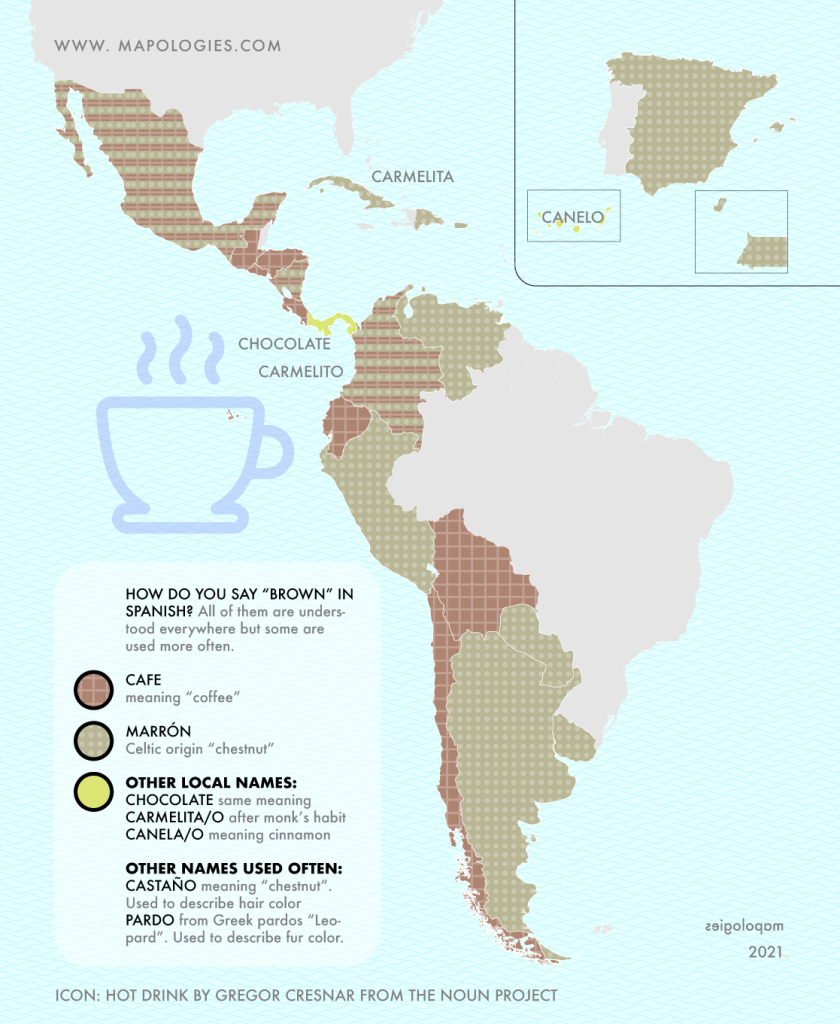
Bumbag
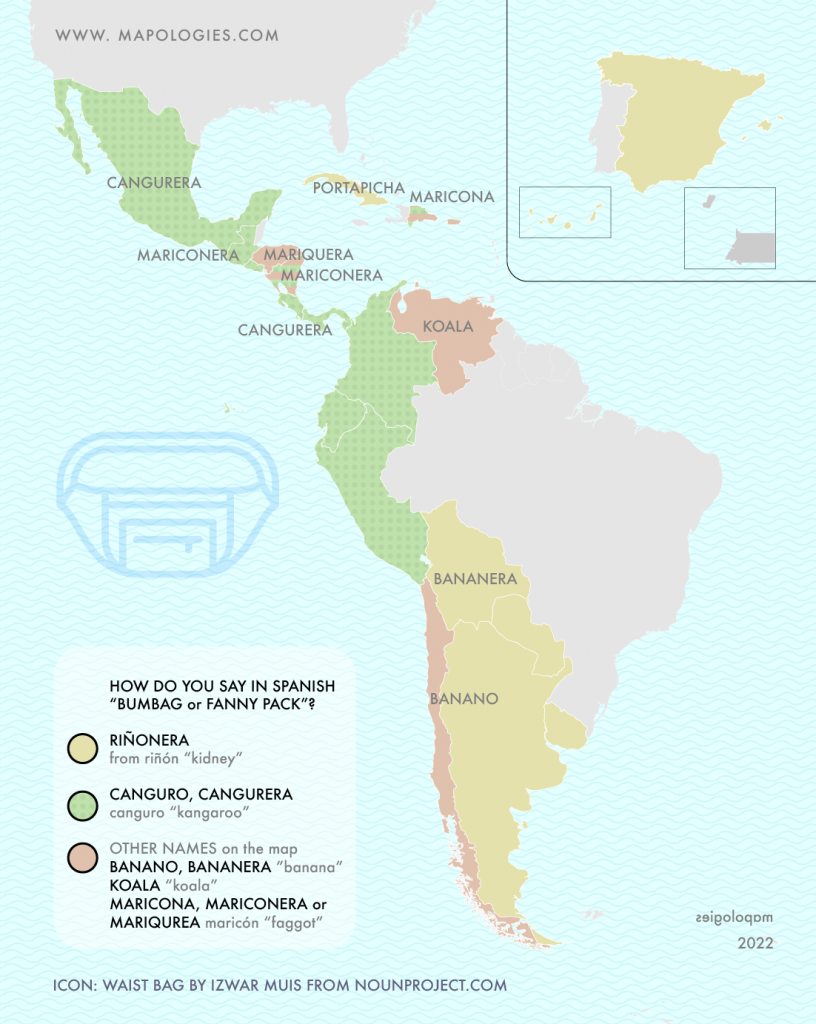
The bumbag, waist bag, belt bag, or fanny pack (especially in North America), is the ultimate hands-free storage solution, allowing you to carry your essentials while keeping your hands free to scroll through your phone. Its design resembles a small fabric pouch or bag worn around the waist, akin to a kangaroo’s pouch for humans. This resemblance has inspired the term “canguro” or “cangurera” in most of Central America and the northern regions of South America.
In Spain and half of South America, “riñonera” is commonly used, referring to the bag’s location around the waist (“riñón” means kidney in Spanish). There are also numerous local names worth noting. “Bananera” or “bannano” refers to its banana-like shape, while “koala” is a straightforward reference. However, “mariconera,” “maricona,” or “mariquera” stems from the derogatory term “maricón” (faggot), indicating the bag’s association with a stereotypical fashion accessory.
Bunk

Car

There are three words in Spanish that mean “car”: carro, auto, and coche. All three are synonyms and can be used interchangeably, but caution is advised:
Carro [ˈka.ro] might be a good choice as it closely resembles the English “car”, actually both originated from the Gaulish word “karros.” However, it also means “cart,” which could lead to confusion in some countries. Additionally, proper pronunciation is crucial as it could otherwise be understood as caro [ˈka.ɾo], meaning “expensive.”
“Auto” is simply a shortened form of “automóvil,” similar to the English word “automobile,” and is widely used in South and Central America. The third term, “coche” [ˈko.t͡ʃe] is primarily used in Spain and Mexico. It may seem strange to English speakers, because it is derived from the name of a Hungarian village, Kocs [kot͡ʃ]. But it is the same root as in “coach”.
Citrics
Lime & lemon
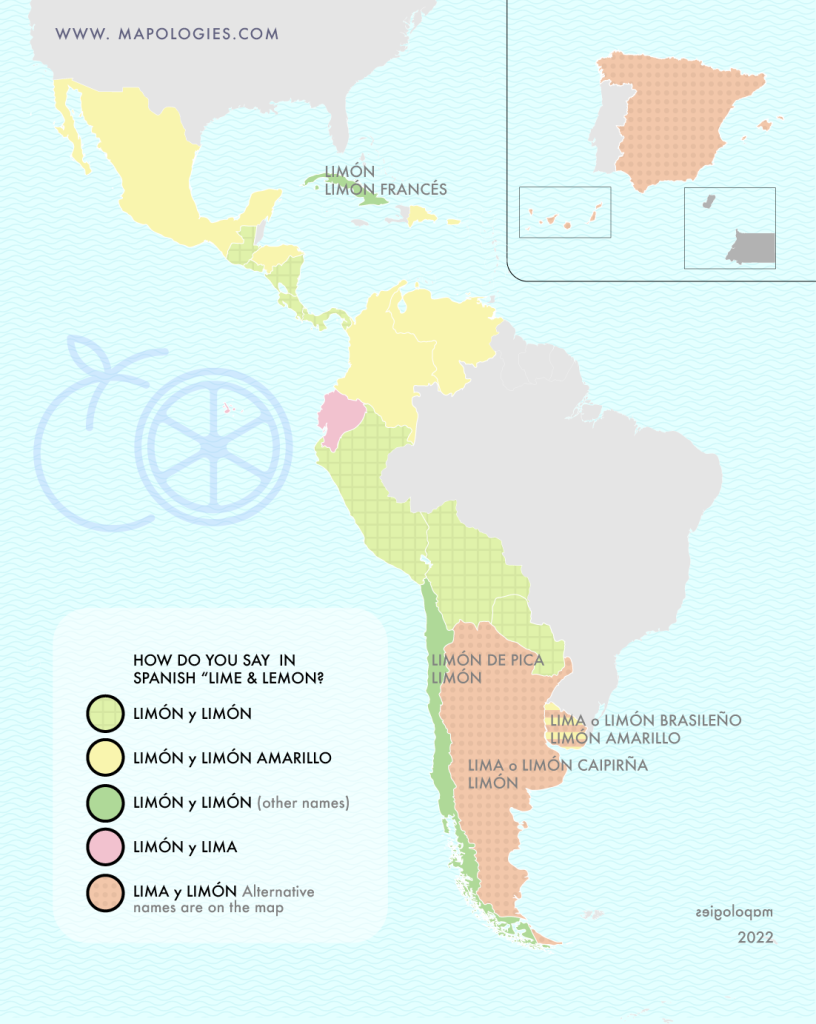
Grapefruit

Clothespin

Computer

“Computador” or “computadora” (informally “compu”) is the Spanish equivalent of the English word “computer.” It originated from the Latin “computator.” Another term used in Spanish, specifically in Spain, borrowed from French “ordinateur” (from Latin “ordinātor”), is “ordenador.”
Corn & Popcorn
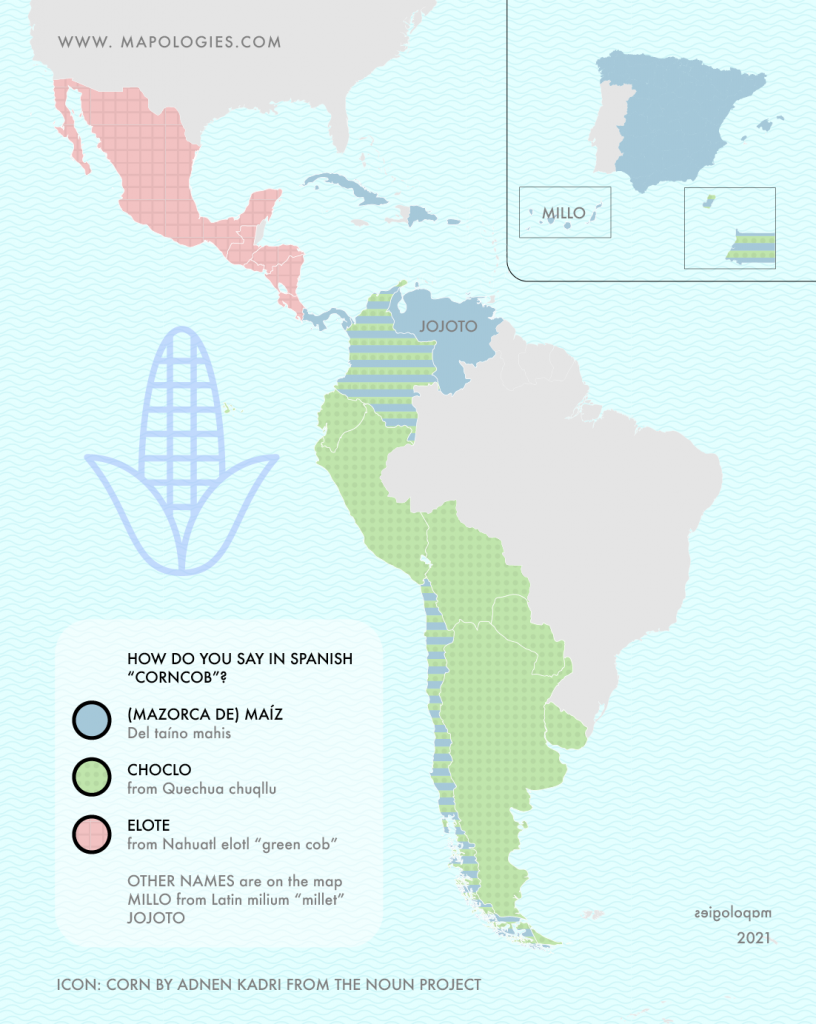
Corn, a versatile cereal grain (Zea mays), holds a significant place in human history, culture, and agriculture in America. Universally recognized by its distinctive yellow cobs, it has different sizes and colors. Given its absence in the Iberian Peninsula, Spanish adopted the terms for corn from indigenous languages:
The term “maíz” is directly derived from the Taíno word “mahiz,” which was one of the native languages in the Caribbean.
“Elote” has its origins in Nahuatl, spoken by the Aztecs in Mesoamerica.
In South American countries like Peru, Ecuador, and parts of Bolivia and Chile, the term “choclo” is used to refer to corn. The word comes from the Quechua language, spoken in the Andes.

Croissant

Doorman
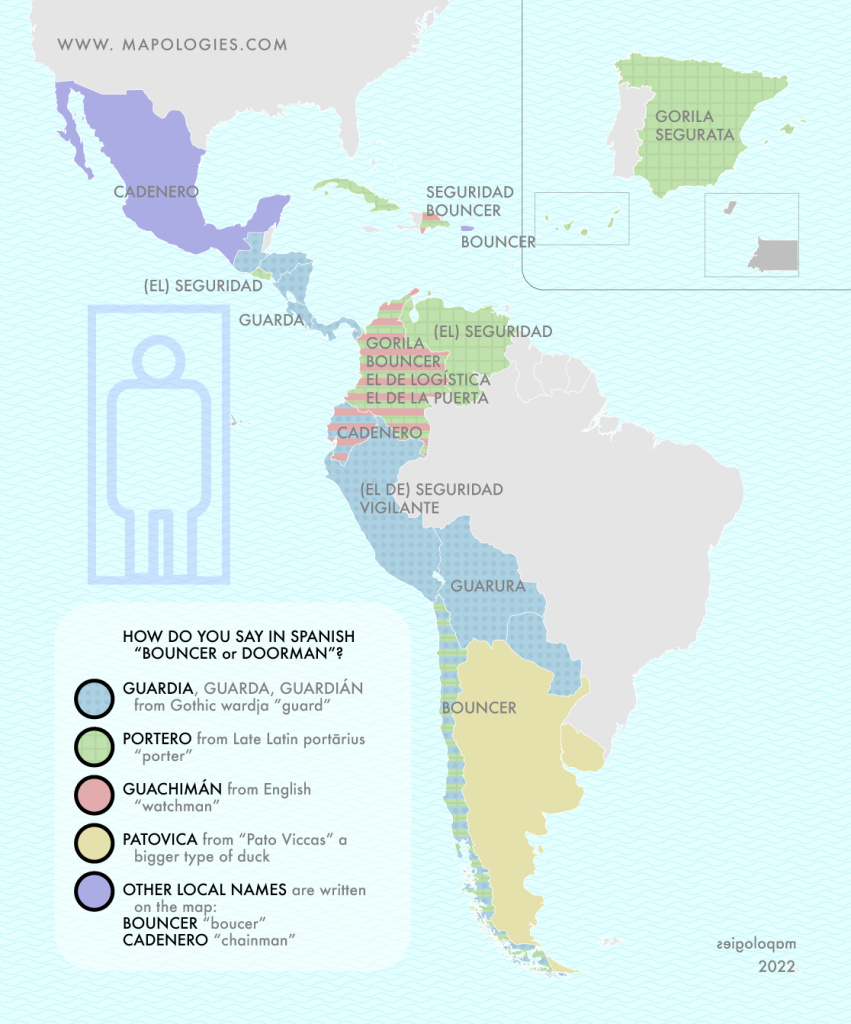
Facemask
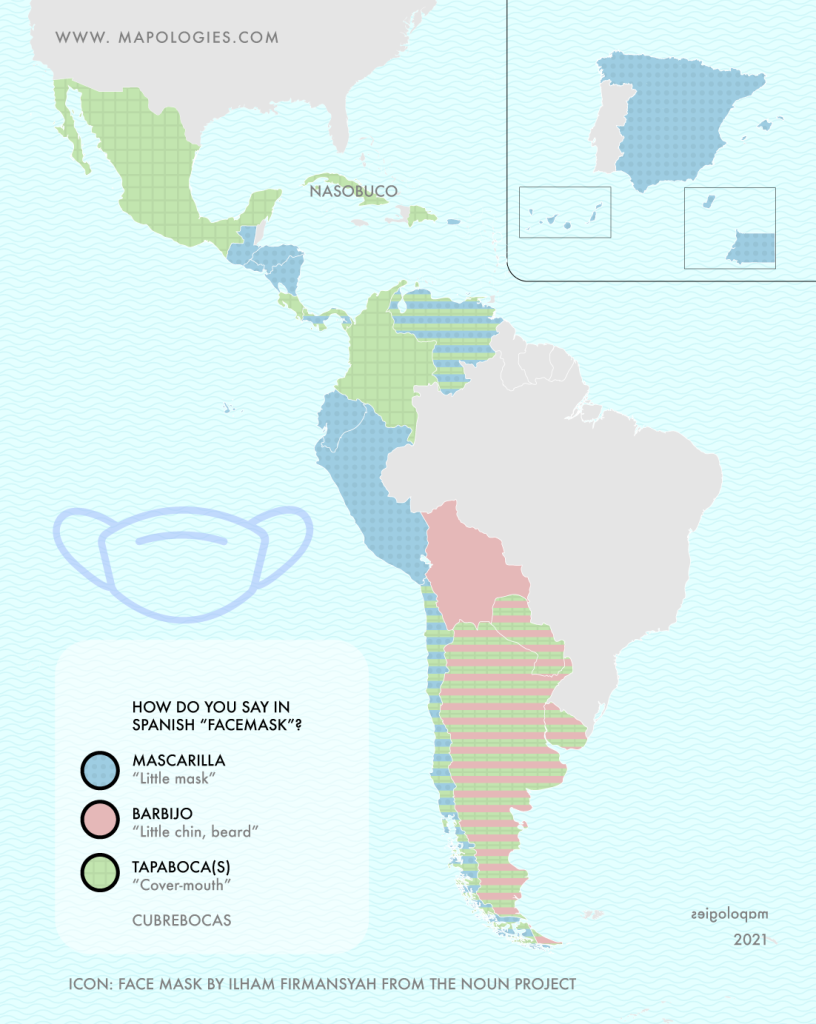
Flip a coin
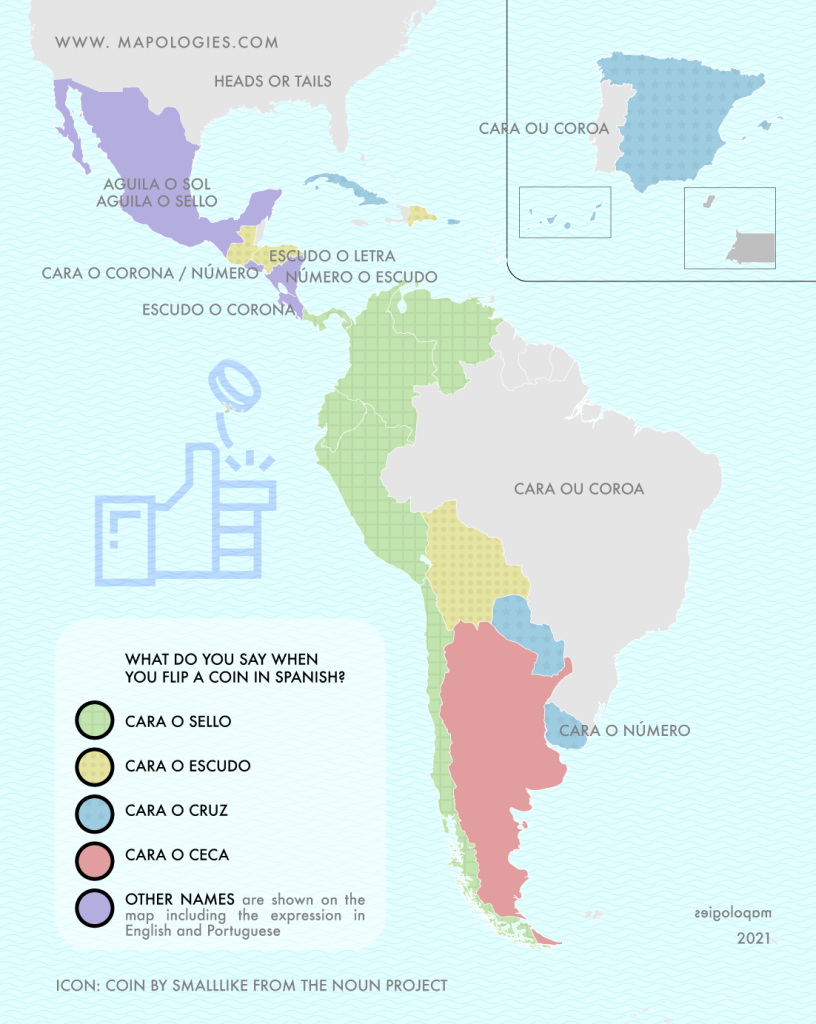
Coin tossing or flipping is a game, that has ancient roots. While playing it Romans used to say “caput aut navis” (head or ship) in Latin, because some coins represented the emperor, on one side, and a boat, on the other. In Spanish, various phrases are employed when flipping a coin, with the expression “heads or tails”: In the old times, in Castille, it was heard “castillo o león” (see the photo). Later in South America, “Cara o sello” (face or stamp) is most common, while in specific locales, “Cara o escudo” (face or emblem) might be employed. In Spain and several other countries, “Cara o cruz” (face or cross) is standard, possibly stemming from imperial coins featuring a mirrored face on one side and a cross on the other. However, in Mexico, “Águila o sol” (eagle or sun) is frequently utilized, given the eagle’s status as a national symbol. The reference to the sun likely originates from old 20-cent coins which depicted a Phrygian hat with rays. Argentinians are also special, they say “cara o ceca” (face or mint).
Are you curious about why English speakers often use the phrase “head and tails”? Many may have speculated that since the opposite of “head” could be “toes,” as seen in the idiom “from head to toe (also foot),” it could also be interpreted as “tail.”

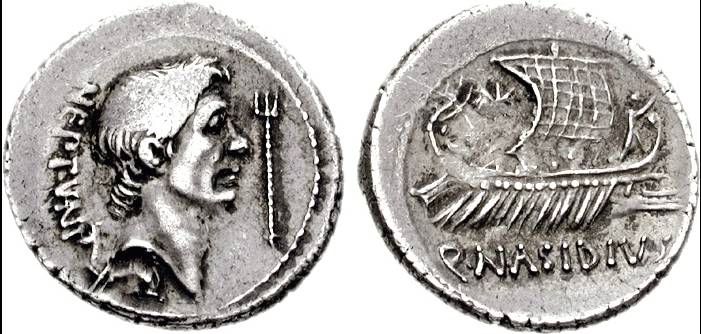
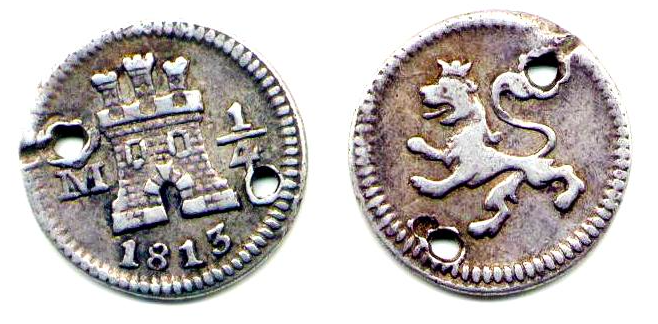
Fridge
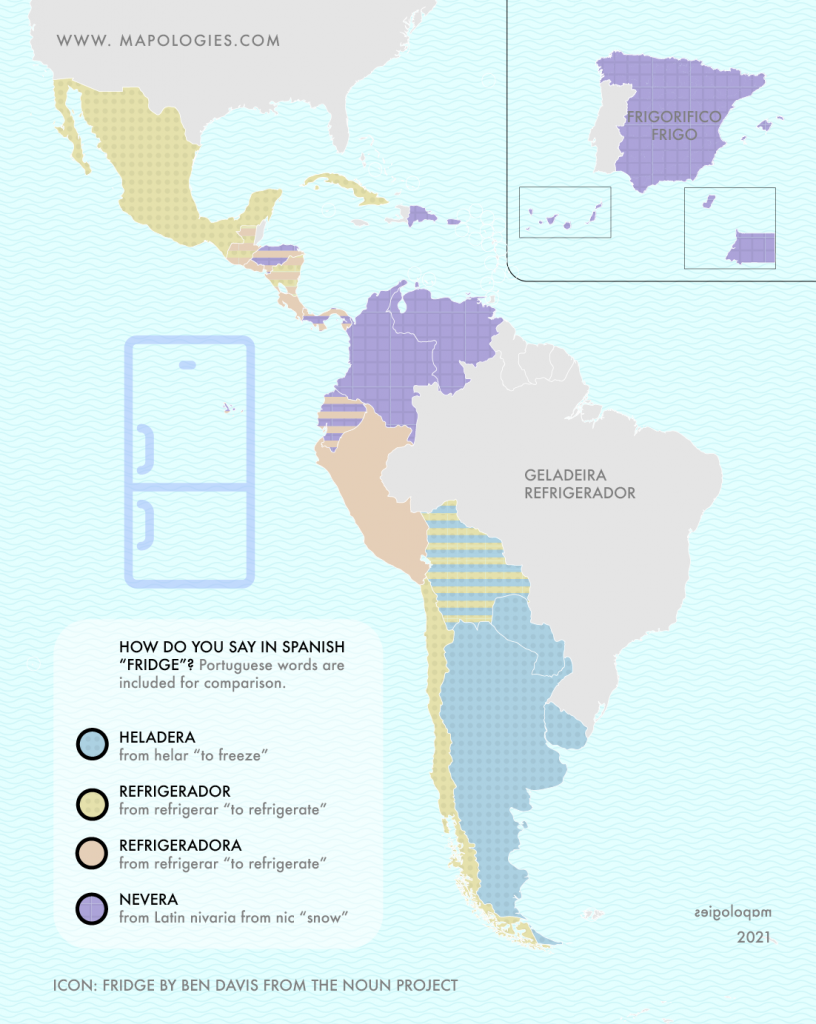
Hopscotch

Hummingbird
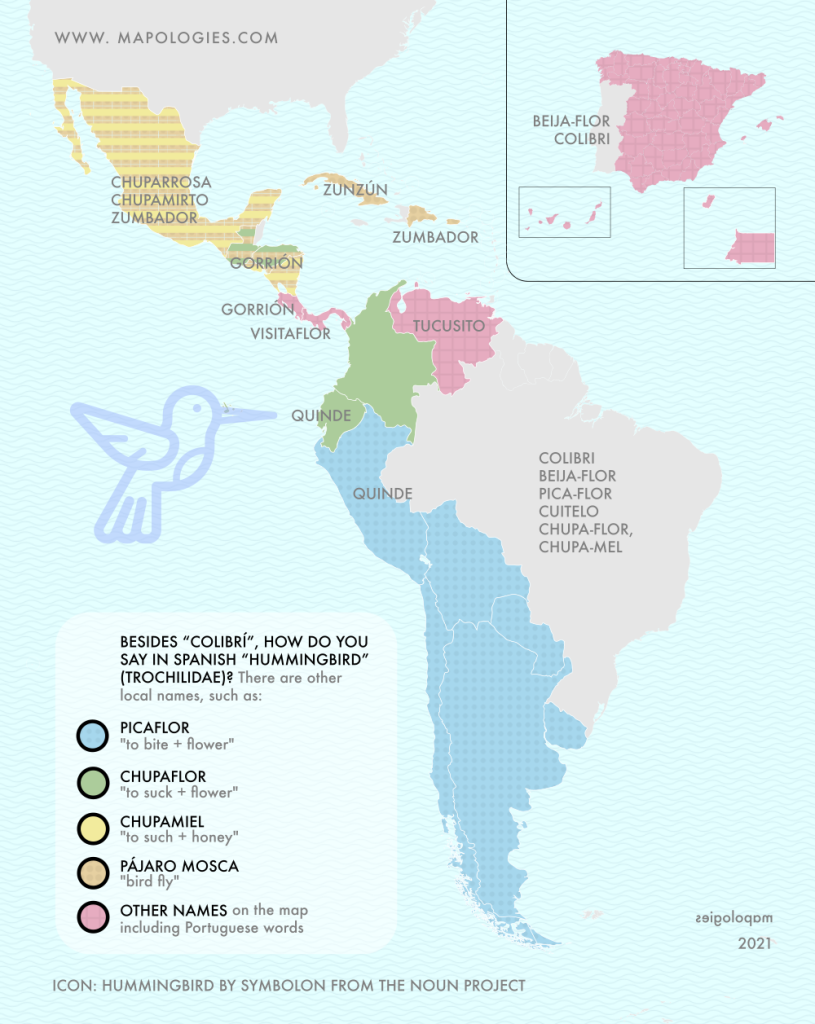
In Spanish, the hummingbird is commonly referred to as “colibrí,” yet diverse regions offer a multitude of alternative names. In Mexico, it’s known as “chuparrosa” and “chupamiel,” with the latter term also used in most of Central America. In the southern regions of South America, it is called “picaflor,” while in the northern areas, “chupaflor” is more common.
Some synonyms for the hummingbird include “avíape,” “besaflor,” “chupaflor,” “picaflor,” “chupamiel,” “chupamirto,” “chupamirtos,” “chuparrosa,” “gurrión,” “picaflor,” and “quinde,” among others, varying by country and region.
Jacket
Informal jacket
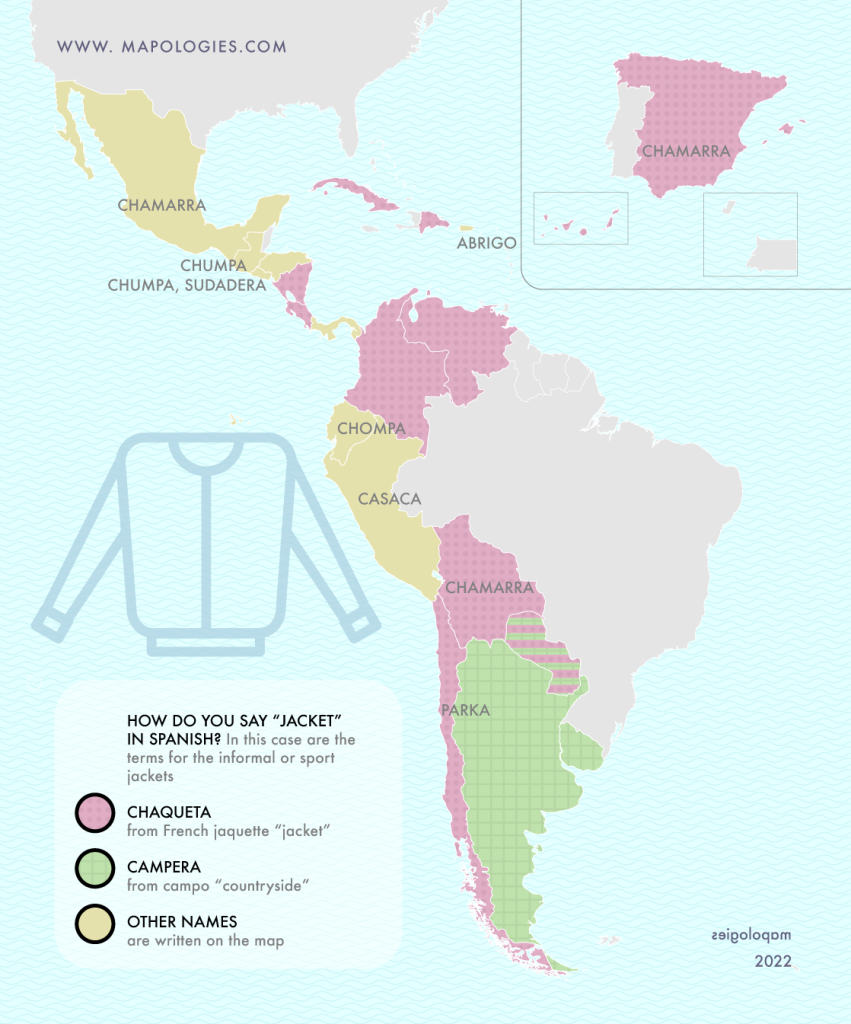
Formal jacket
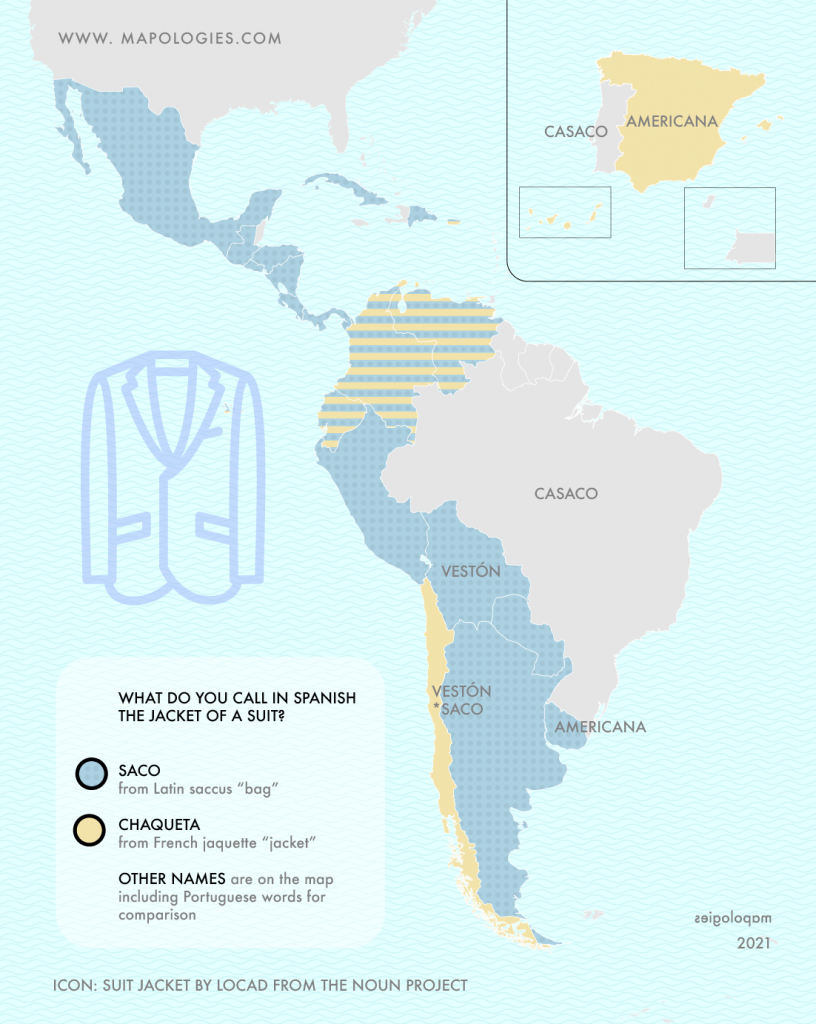
Jeans
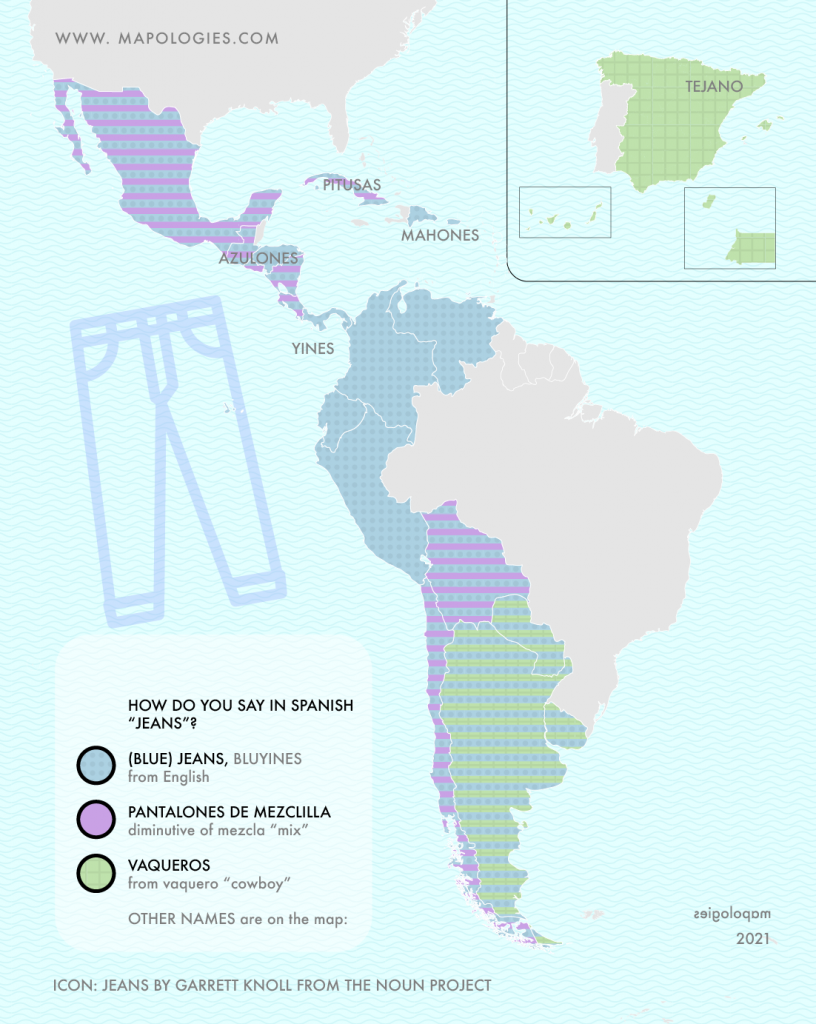
Kick
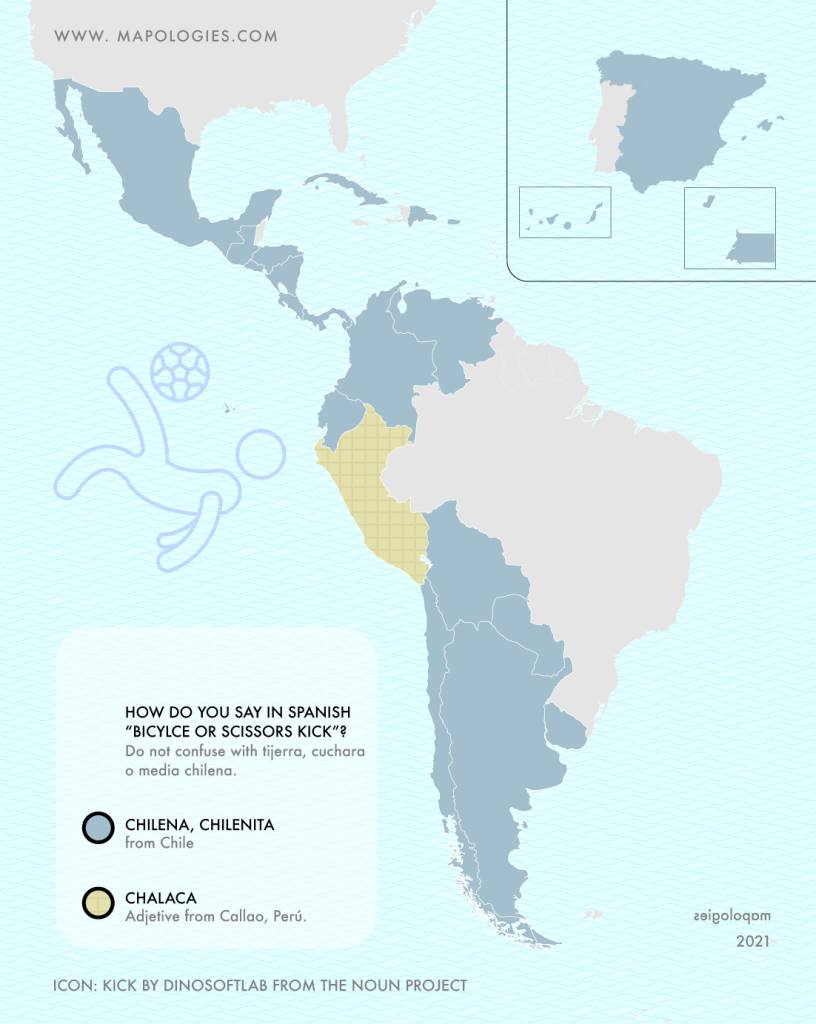
Chilena or Chalaca? Unzaga or Villanueva?
In 1906 Spanish immigrant Ramón Unzaga arrived in Chile, later becoming a Chilean citizen at the age of 18. A versatile athlete, he introduced the “scissors kick” defensive move on January 16, 1914, at the El Morro Stadium in Talcahuano. Initially, this acrobatic move was named “chorera” in Talcahuano, referring to the “Chorera School,” the soccer team of that port; meanwhile, Unzaga referred to it as “salto de lujo” or “mi jugada” (luxury jump or my play). Playing for and captaining the Chilean national team, he popularized the technique. A statue was erected in Talcahuano in 2014 on the centenary of his famous move known as the “chilena.”
Meanwhile, in the north, in Perú, the first documented instance of this move in Peru dates to 1924 when Alejandro Villanueva performed it during a national championship match, popularizing it among Peruvian fans. The move originally called caracol (snail), became known as the “chalaca“.
Letters

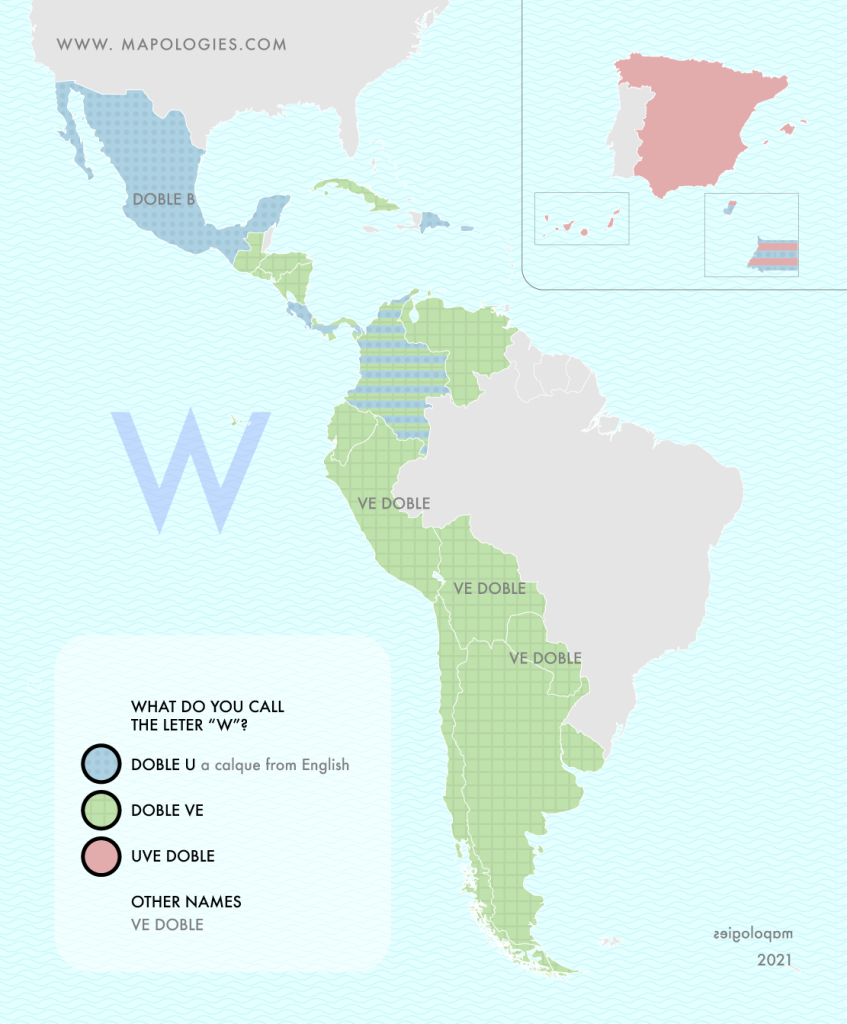
Lift

Lighter
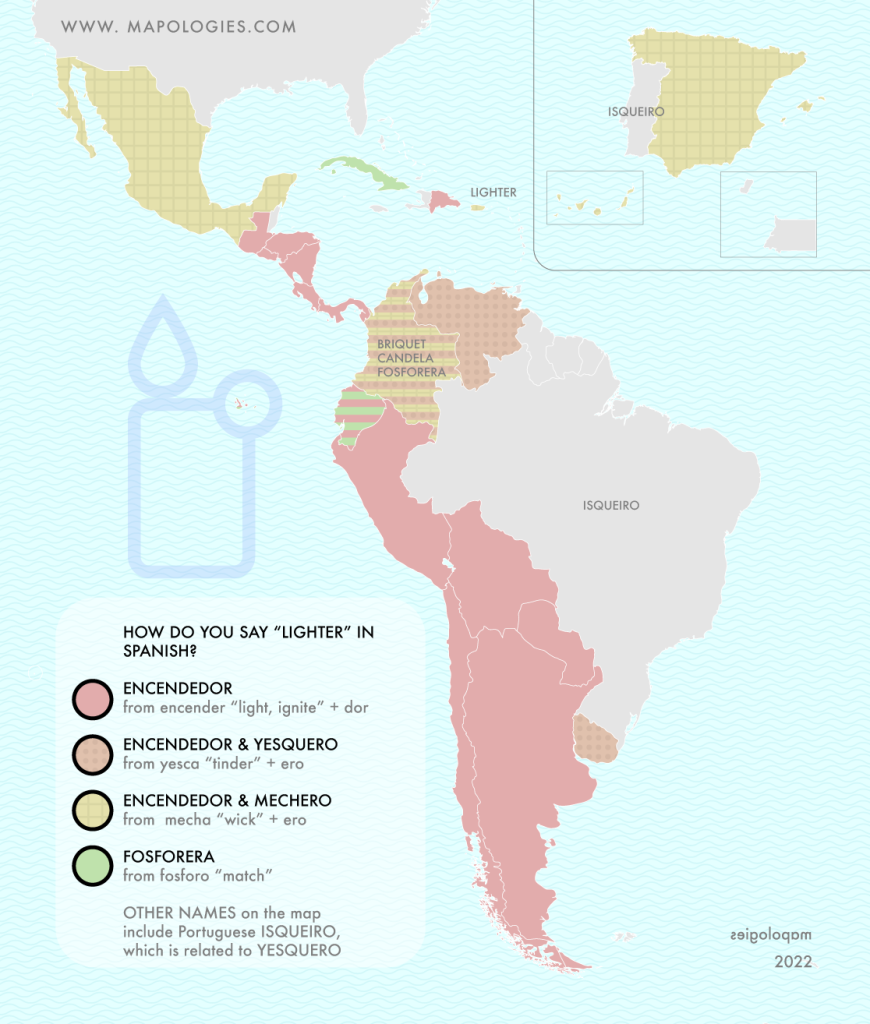
“Do you have a lighter?” Whether you smoke or not, having a lighter on hand can come in handy. The Spanish language offers several terms for this. Each term carries its own unique meaning.
“Encendedor” originates from the Spanish verb “encender,” meaning “to light” or “to ignite” with the suffix “-dor,” which indicates an agent or tool: Encendedor is literally “Lighter”.
Another ending is “-ero” or “-era”, often used to create new words: “Mechero” derives from “mecha,” referring to a wick or fuse used for lighting fires or lamps; “Yesquero” traces its roots to “yesca,” meaning “tinder” or “kindling”; and lastly, “fosforera” is connected to “fósforo,” which translates to “phosphorus” or “match”.
Lolipop

Olive

Pan
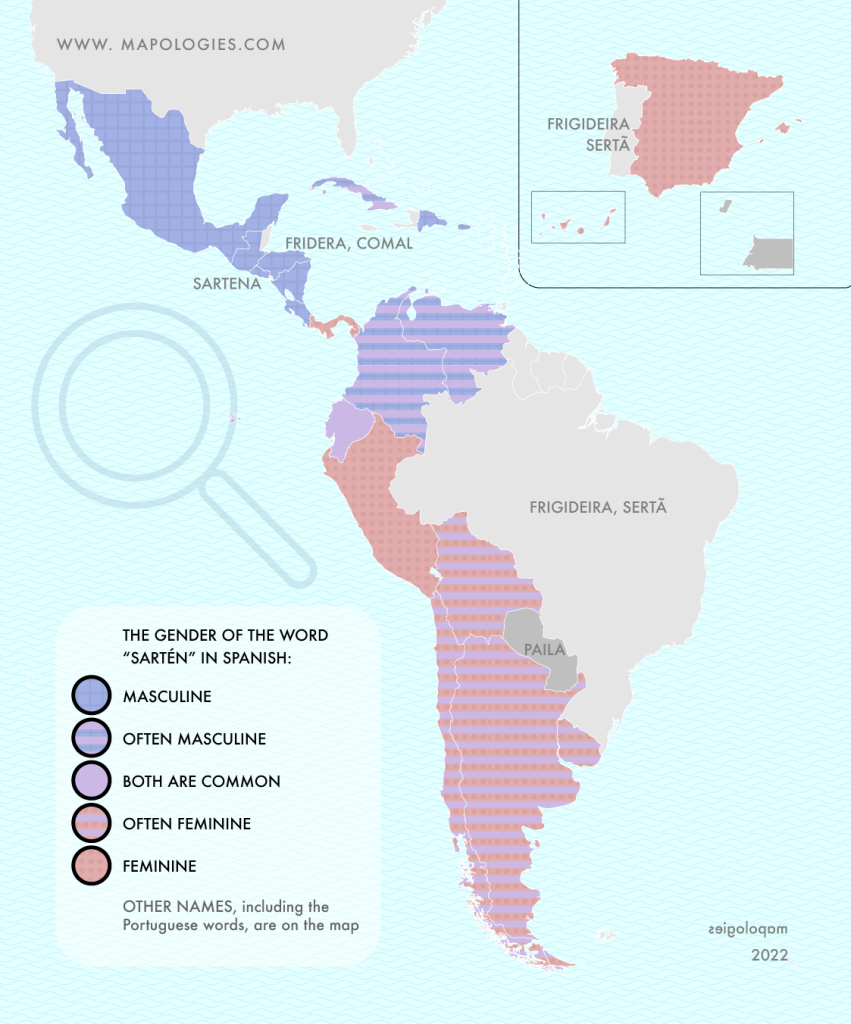
Panties

Pea
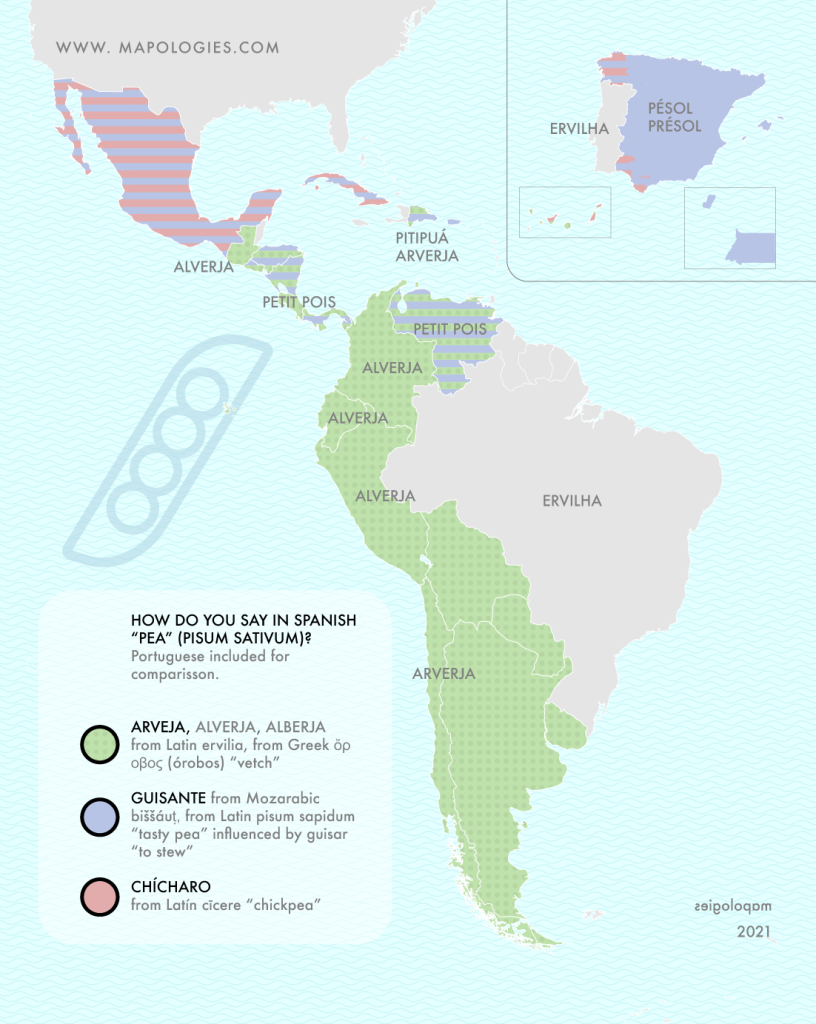
Peach
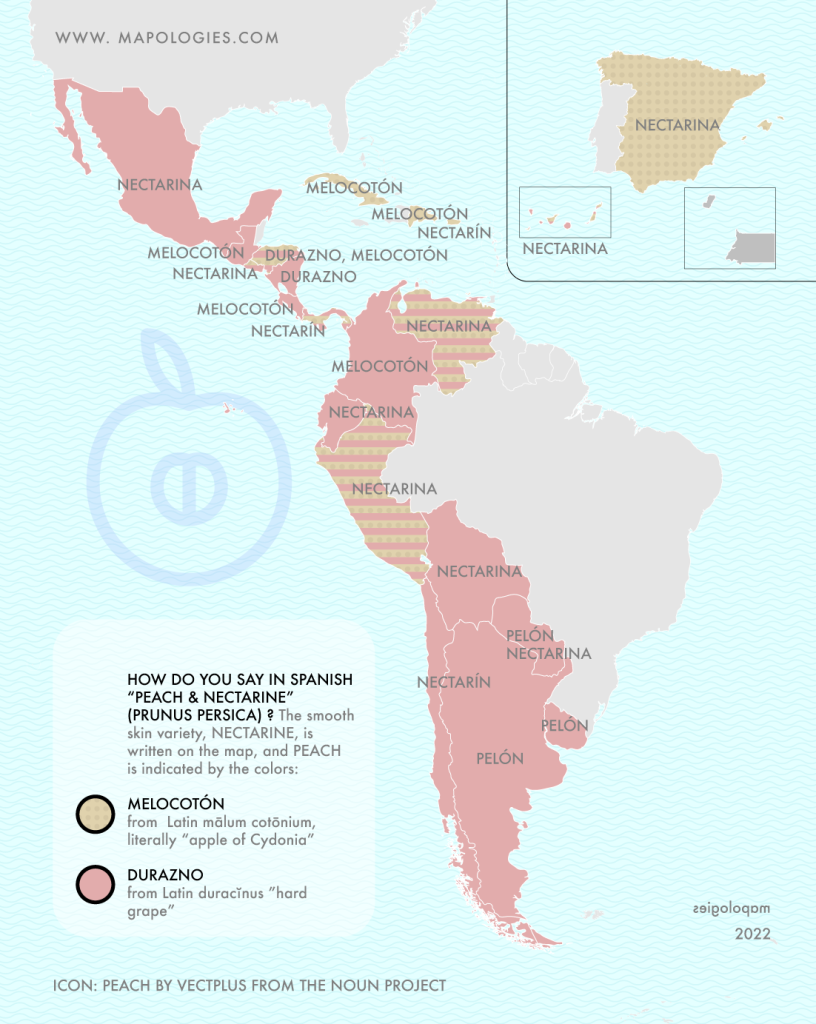
Peanut
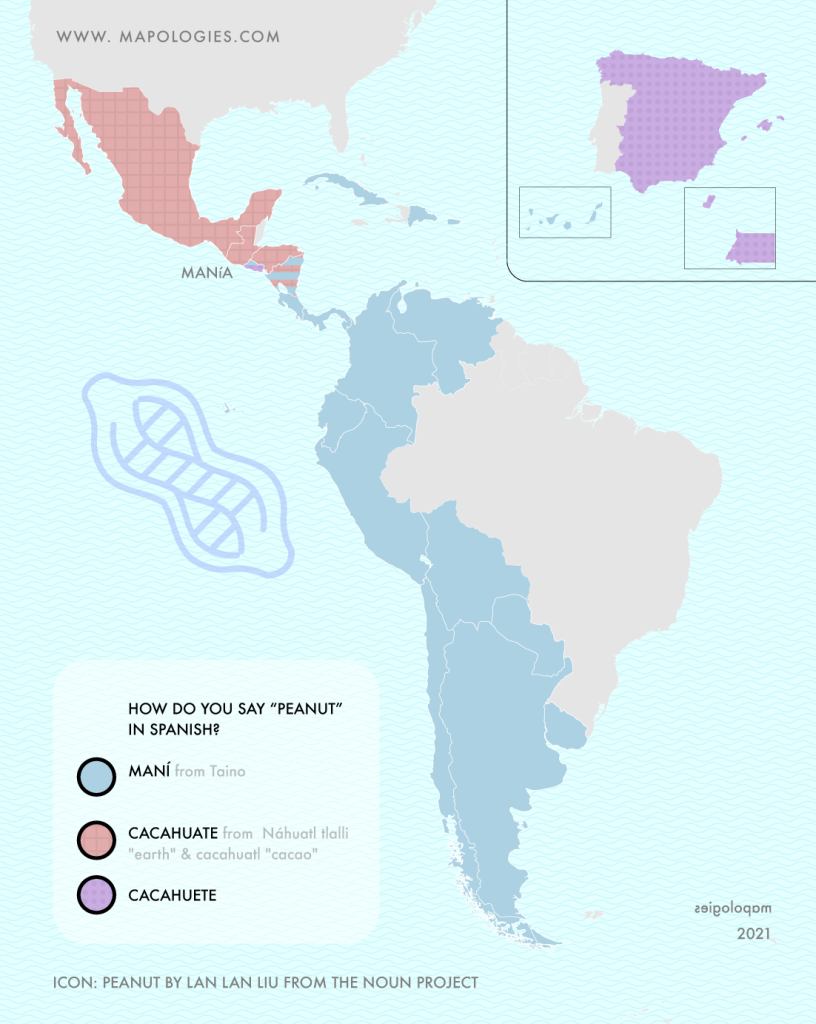
Pen
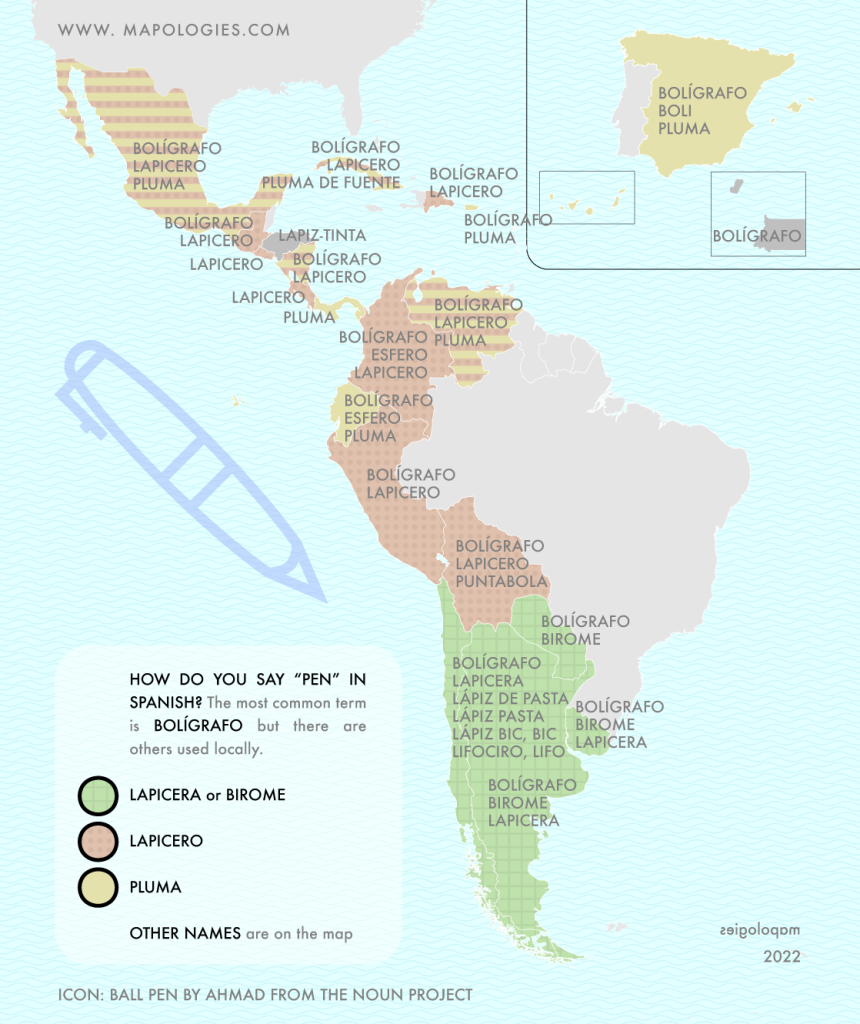
Pig

Poinsettia

Flor de Pascua or Flor de Navidad? The poinsettia, originating 8,000 miles from Bethlehem in southwestern Mexico‘s rocky canyons. There the Aztecs called the plant cuetlaxochitl “wither flower” and the Mayans called the plant k’alul wits “ember flower”. First, it gained Christmas association when Franciscan missionaries incorporated it into nativity scenes in the 16th century. Later American diplomat Joel Poinsett, intrigued by the plant, sent specimens to Charleston, South Carolina, in the 1820s, contributing to its English name. The Ecke family played a pivotal role in popularizing poinsettias as a Christmas symbol, securing their presence in Hollywood’s seasonal television specials.
In Peru, it is called “cardenal” and, in Venezuela, “papagayo” for its red color. In Argentina, the color was associated with the Federal Party and thus “estrella federal” (federal star).
Pumpkin
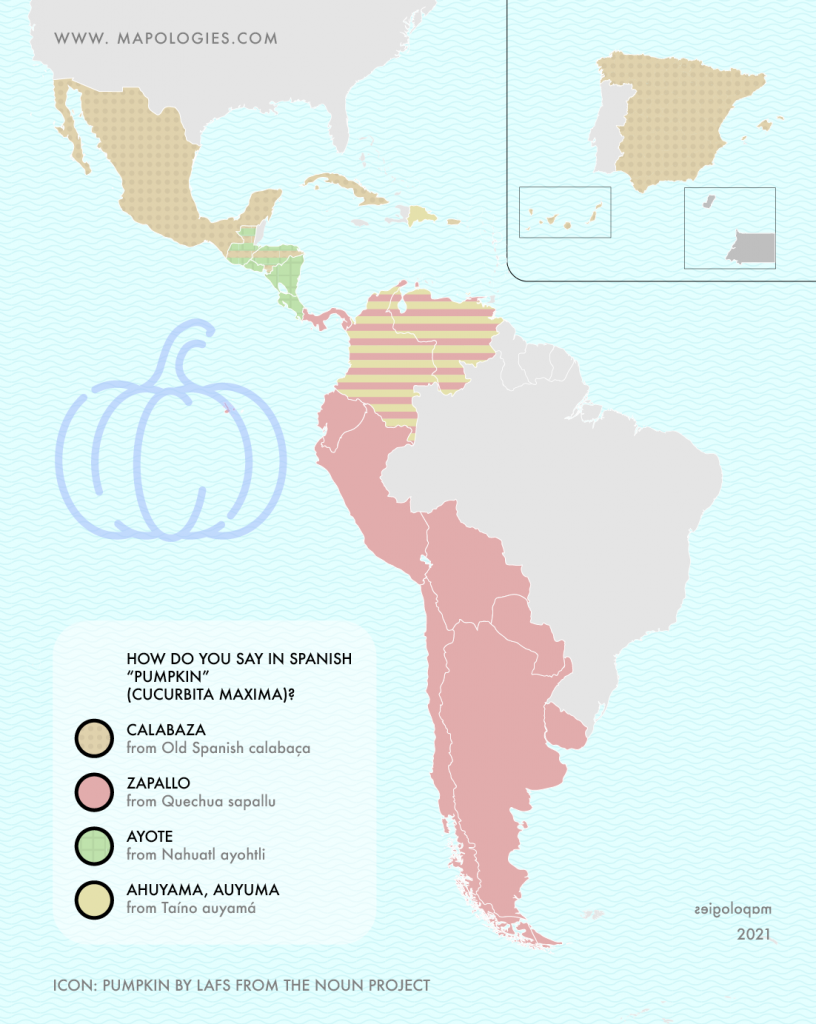
The diversity of some Spanish words is a consequence of contact with different language families. for example, during the era when Arabs were in the Iberian Peninsula, many words and cultural elements were introduced into the Spanish language: “calabaza” is one of those examples, from Arabic قَرْعَة يَابِسَة (qarʕa yābisa) “dry gourd” it was a borrowing from Persian خربزه (xarboza, xarboze) “melon”.
On the other hand, in South America, there was the Inca empire, whose official language was Quechua. In this language “sapallu” refers to various types of pumpkins and squash, in modern Spanish, it became “zapallo”.
Central America was the place of the Aztec empire, where the dominant language was Nahuatl. They use the term “ayote” (originally ayohtli “gourd, squash”).
Finally, “auyama” is a word used in Venezuela and Colombia, possibly auyamá in Taino, an extinct Arawakan language.
Radio
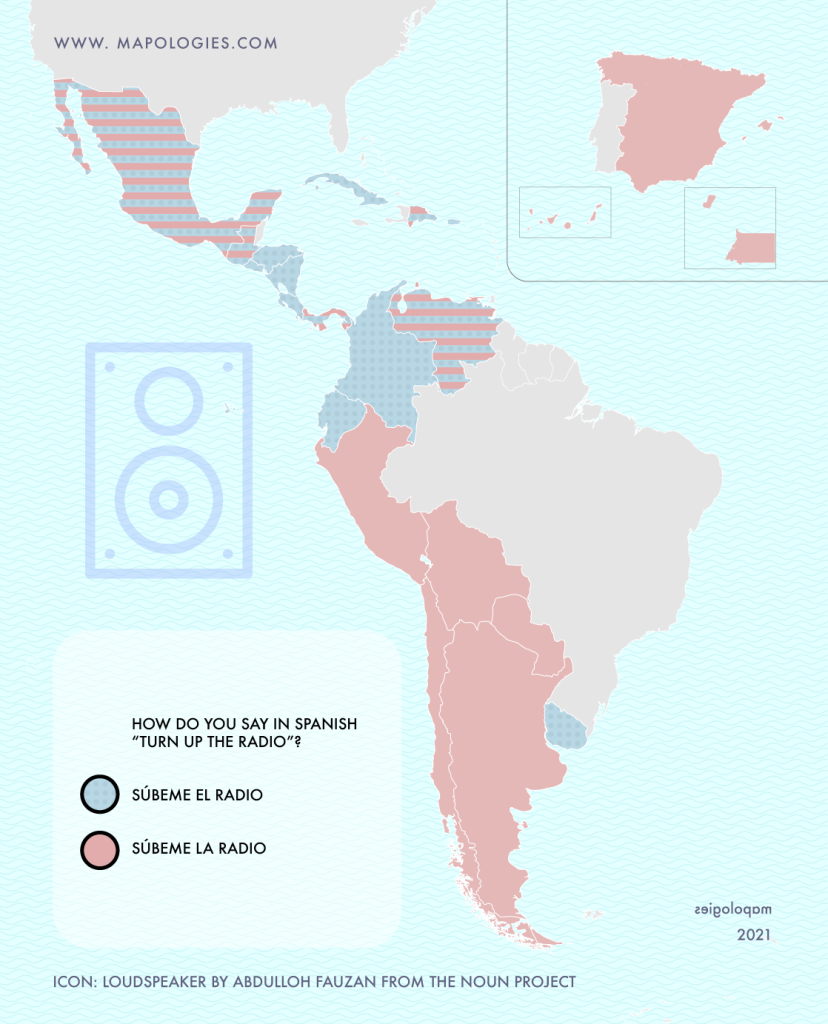
Sidewalk
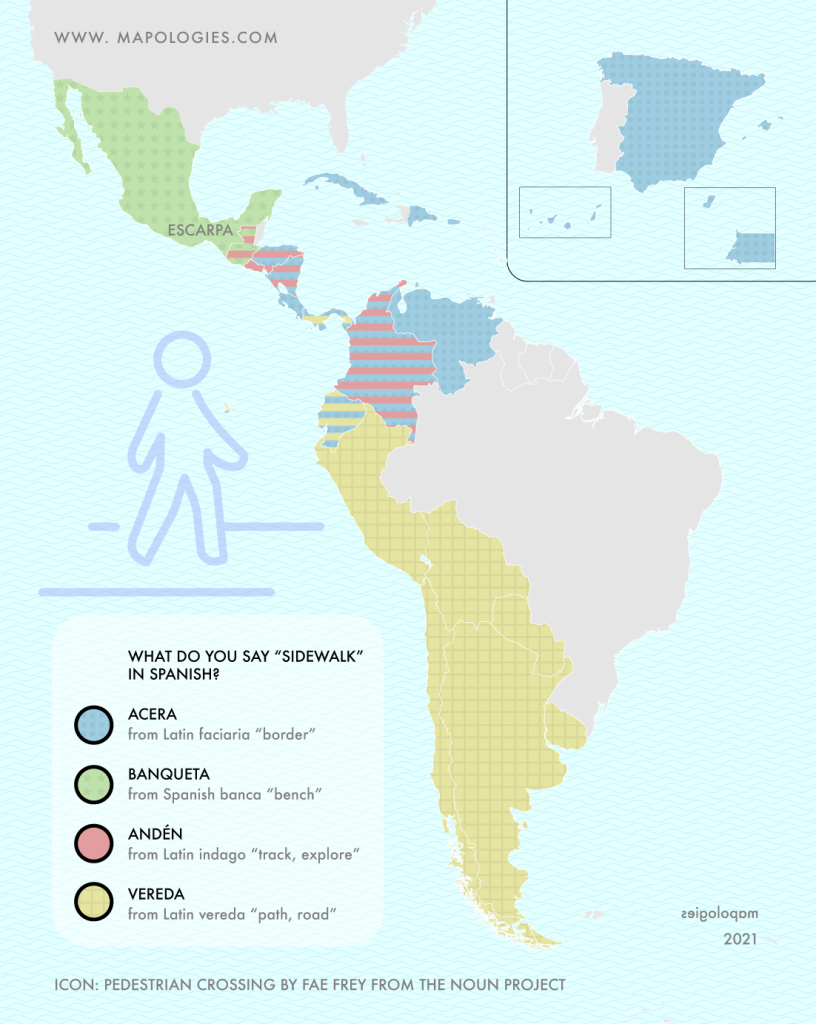
Sink

Sneakers

For a more accurate explanation of the terminology employed in Spain, please consult this page.
Speakers

Stamp
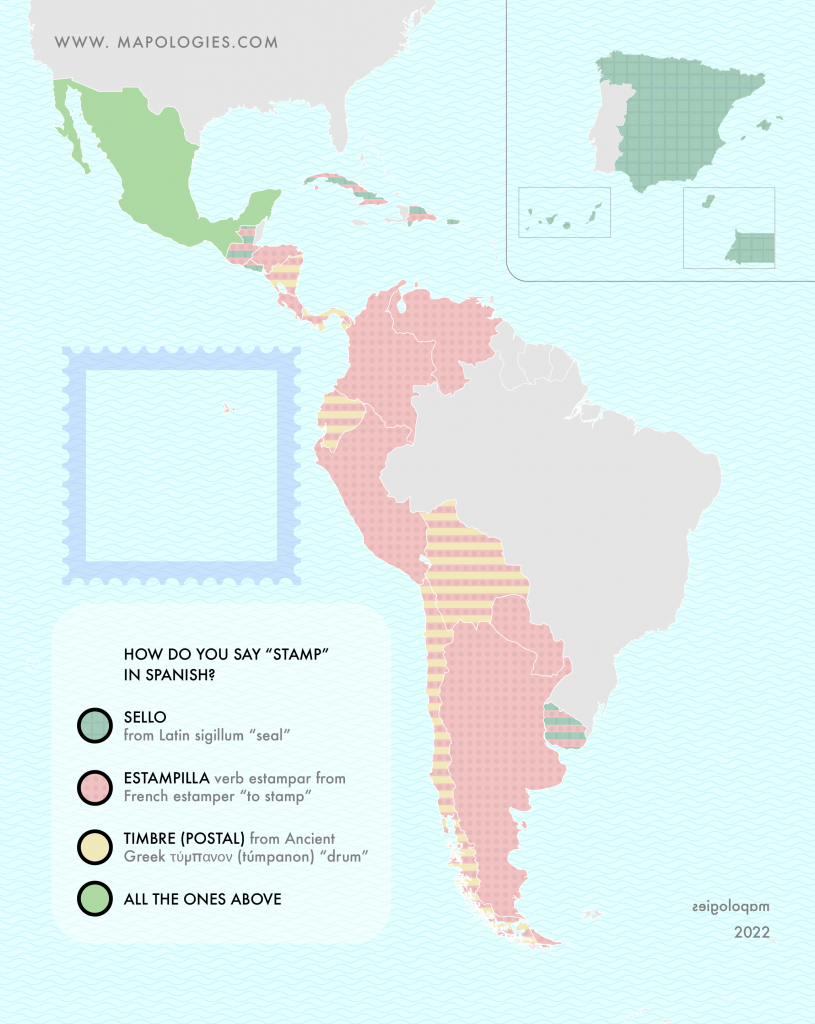
Stop sign
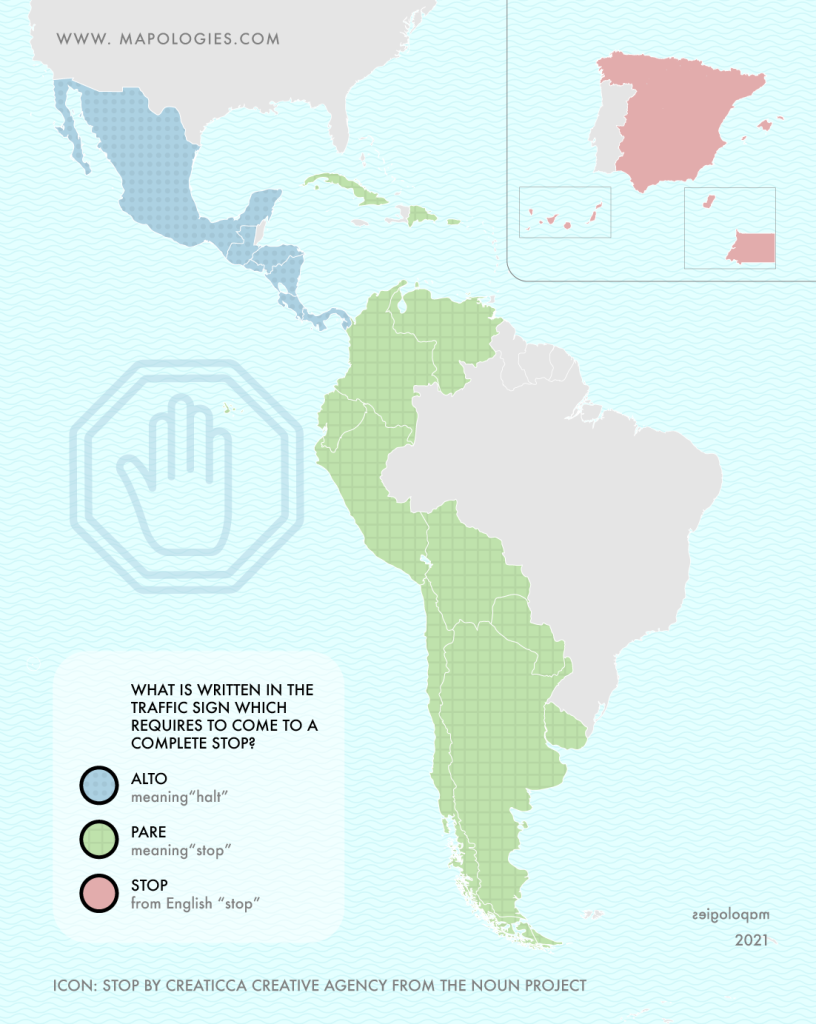
Straw
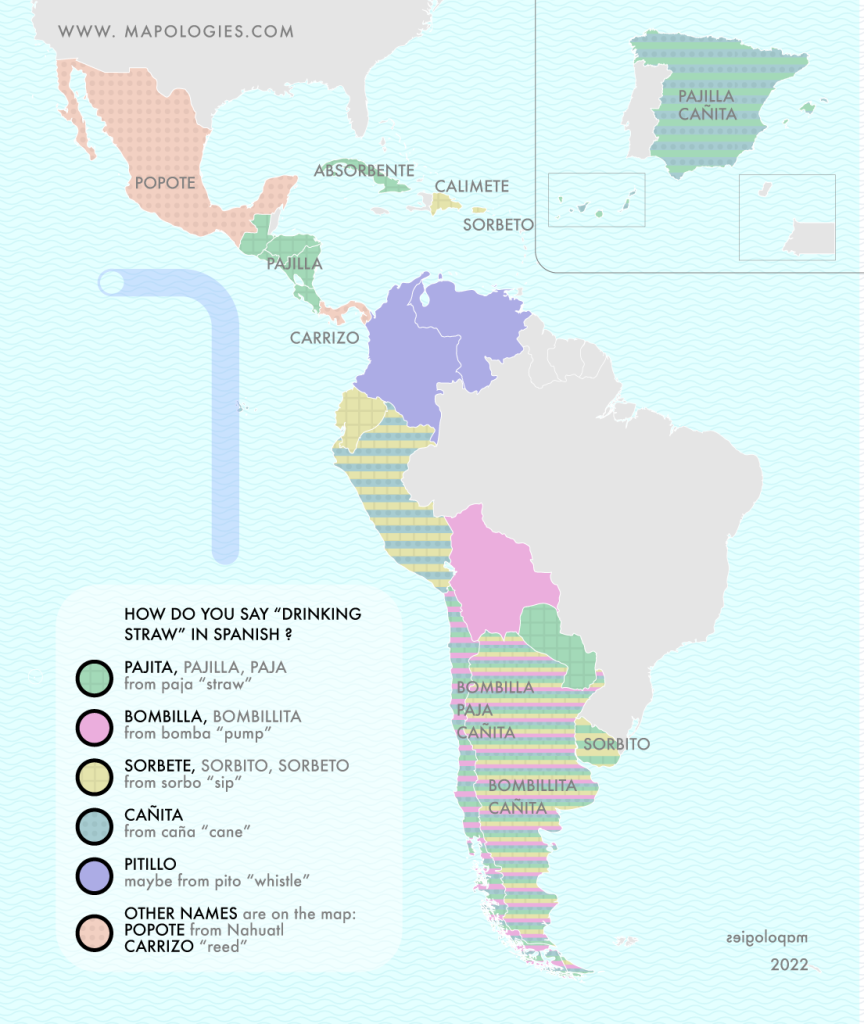
Strawberry

Sweater
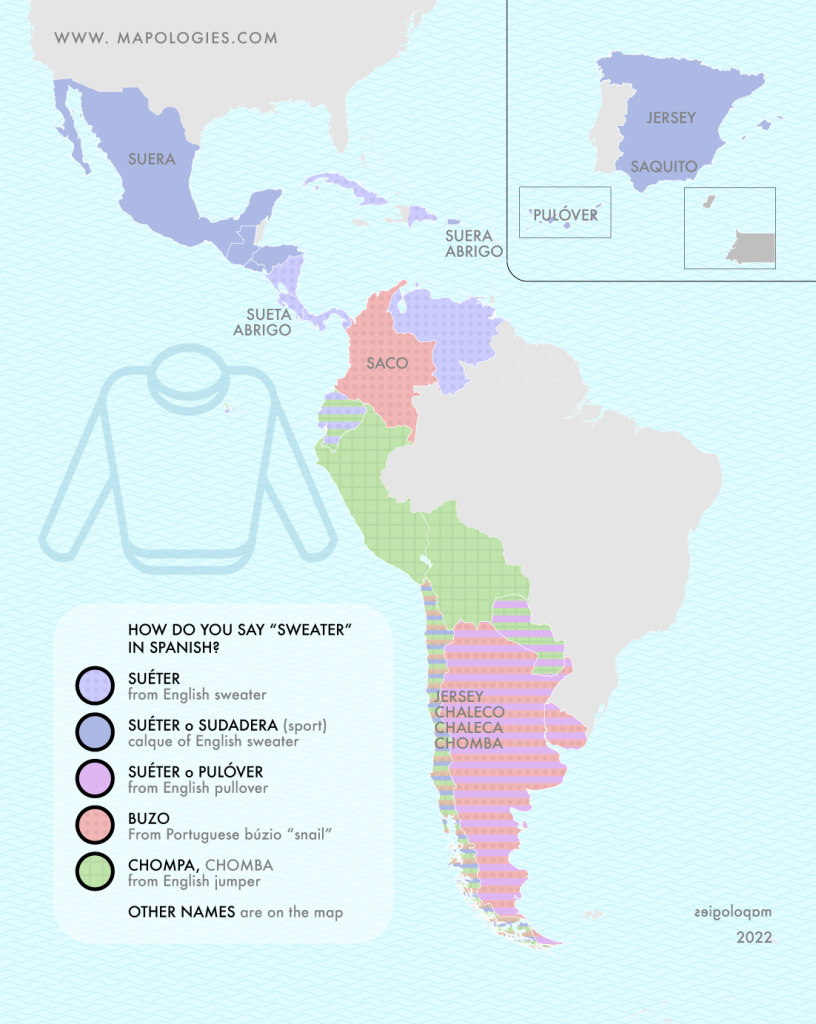
Table football
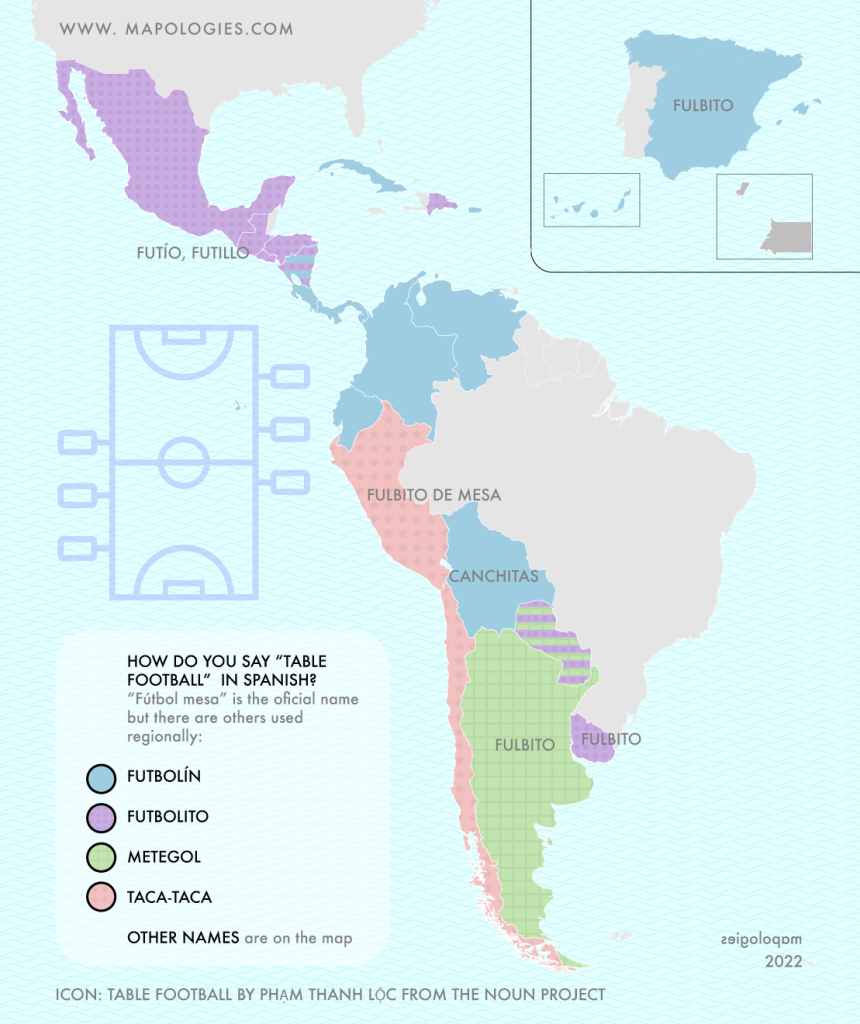
Telephone
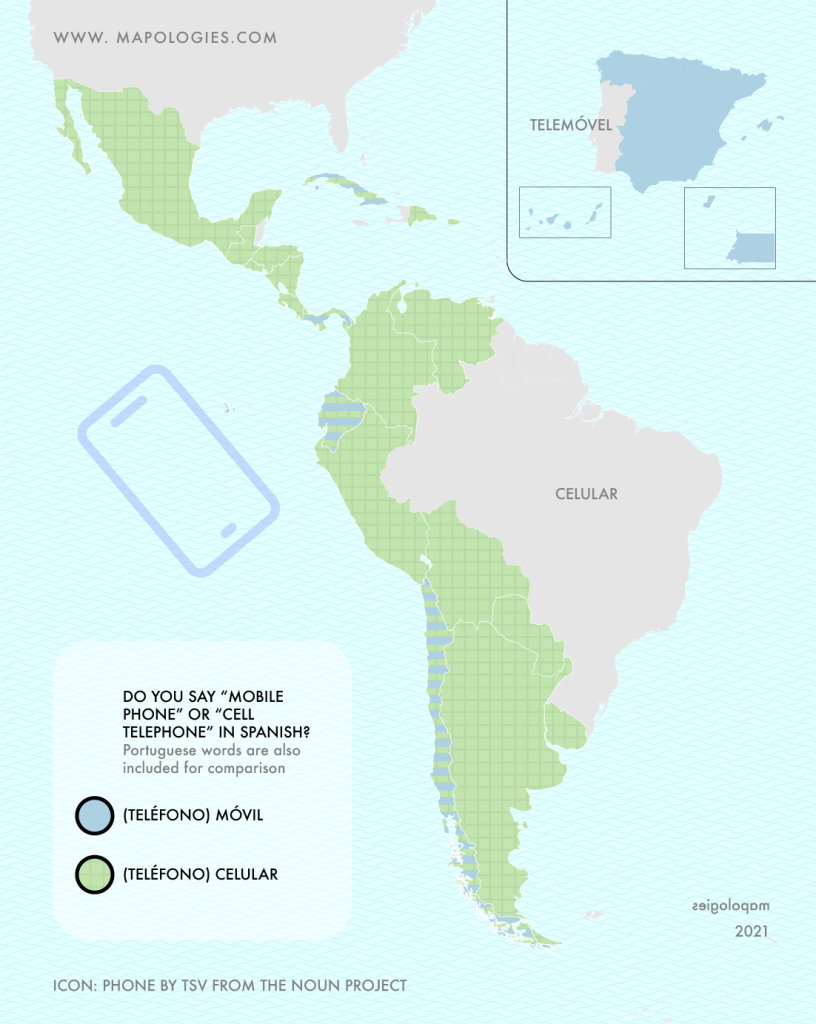
The term “mobile phone” is used to describe the device’s ability to move or be carried easily. It is more commonly used in British English. The term “cell phone” is derived from the word “cellular,” which refers to the cellular network infrastructure used for communication. It is more used in American English. Similarly, “Móvil” is less used than “Celular” in the American varieties of Spanish.
Trunk

T-shirt
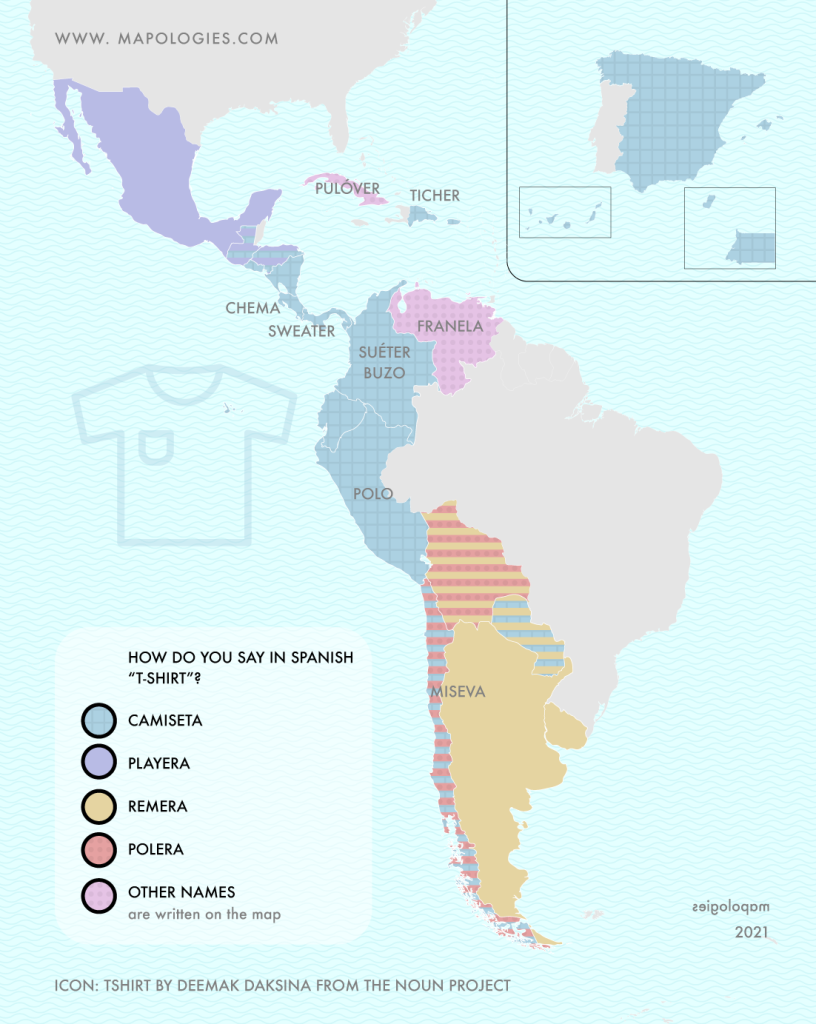
Twin

Waiter

Wrench

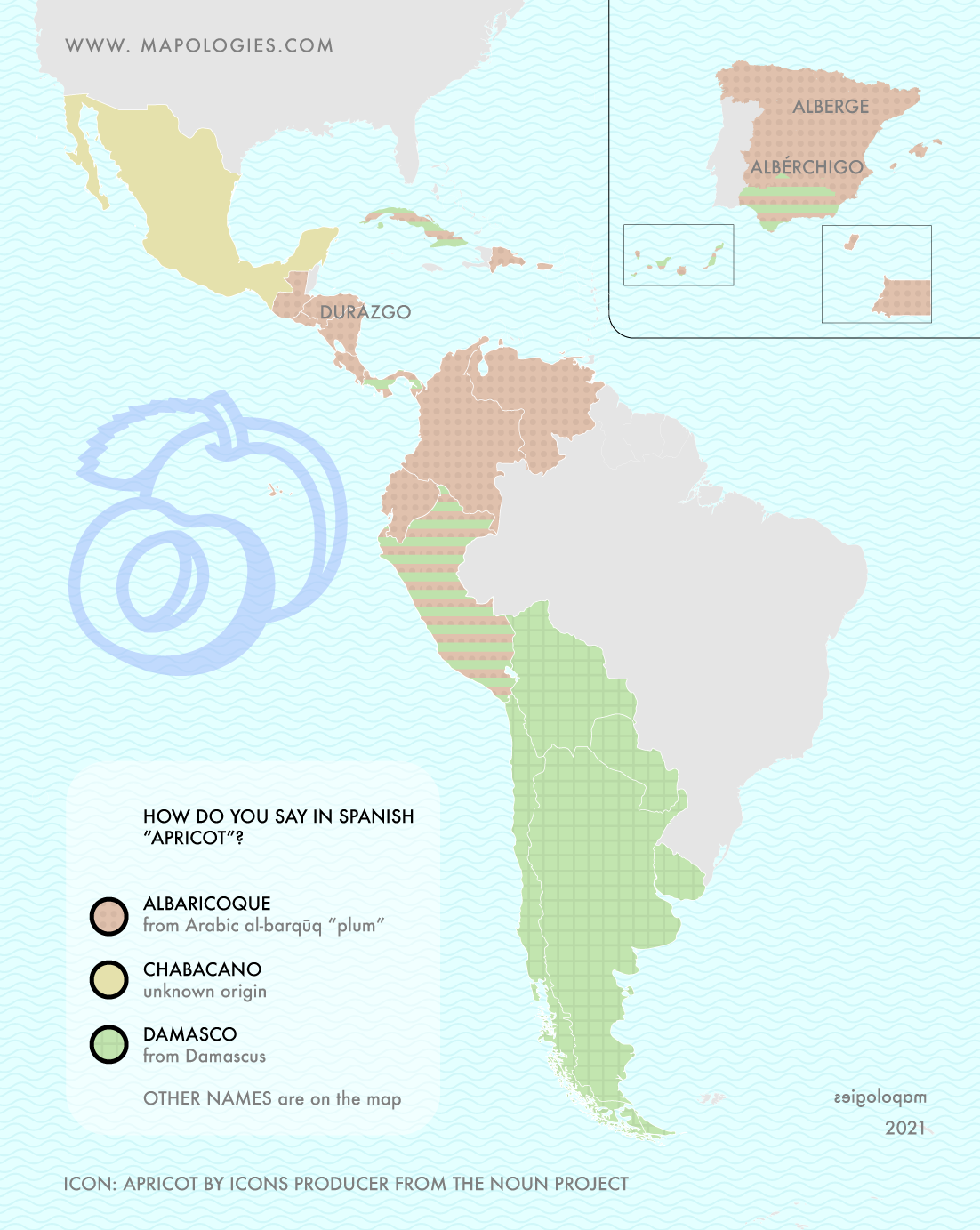



In México, the most c